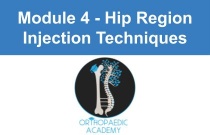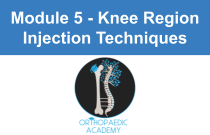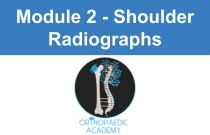Management of Anorexia Nervosa
Mageta Kevin
1.00 Hours
Welcome to the course on Anorexia Nervosa. This course has been created to provide you a thorough understanding of anorexia nervosa, an intricate and potentially fatal eating condition that affects millions of people globally. You will learn about the causes, signs, symptoms, diagnosis, types of therapy, and medical complication....
Management of self-harm, suicidal ideation and suicide attempts
Simon Githui
2.00 Hours
Welcome to this course on self-harm, suicidal ideation and suicide attempts. In this course, we are going to learn on the tents of self-harm, suicidal ideation and suicide attempts, the risk factors, protective factors, signs & symptoms and the prevention and management of self-harm, suicidal ideation and suicide attempts. You w....
Erectile Disorder
Andrew Matiiri and Simon Githui
1.00 Hours
Welcome to this module on Erectile Disorders (ED). This module is designed to provide comprehensive insights into the various aspects of ED, including its causes, symptoms, diagnosis, treatment options, and the psychosocial factors associated with it. This module has five multiple choice questions that you can use to carry out s....
Intellectual Disability
Ian Itolondo and Simon Githui
1.00 Hours
Welcome to this course on Intellectual Disability (Intellectual Developmental Disorder). We shall discuss this disorder as classified in the Diagnostic and Statistical Manual of Mental Disorders, Fifth Edition, Text Revision (DSM-5-TR). The course will help you learn the classifications, causes, clinical presentation and managem....
Fluid & Electrolyte Management in the Newborn
Dr. Juli Reynolds
By the end of this course, you will have learnt about the Fluid and Electrolyte Management in the Newborn.
Pediatric Healthcare - Growth and development
Dr. Juli Reynolds
Growth and development are extremely important as it can detect early changes in a child’s growth. Both growing too slowly or too fast may indicate a nutritional or other health problem. This course covers important aspects of correct measuring and documenting a child’s growth from birth by using growth charts.
Unit 1. Introduction and Overview
Uganda Catholic Medical Bureau (UCMB)
Unit 1. Introduction and Overview
Module 1 - Shoulder Region Injection Techniques
Firas Arnaout and Mahmoud Massoud
The 'Shoulder Region Injection Techniques' module covers comprehensive techniques and approaches for administering injections in the shoulder region. Participants will learn about various injection sites, indications, contraindications, and the latest advancements in injection therapies for shoulder-related conditions.
Module 4 - Hip Region Injection Techniques
Firas Arnaout and Mahmoud Massoud
This module covers various injection techniques for the hip region, focusing on both diagnostic and therapeutic applications. It provides comprehensive training on the anatomy, indications, and procedural steps necessary for effective hip region injections.
Module 5 - Knee Region Injection Techniques
Firas Arnaout and Mahmoud Massoud
This module provides an in-depth exploration of injection techniques specific to the knee region, focusing on both diagnostic and therapeutic applications. It covers various approaches, including intra-articular and peri-articular injections, with detailed guidance on indications and procedural steps.
Module 2 - Shoulder Radiographs
Mr. Akhil Kapoor
• Explore the essential principles and techniques for interpreting shoulder radiographs. • Gain practical skills for diagnosing common shoulder conditions through radiographic analysis.
Resilience Factors for People Who Use Drugs
Katherine Rudzinski, Ph.D., et al.
1.00 Hours
Research in the area of illicit substance use remains preoccupied with describing and analyzing the risks of people who use drugs (PWUD), however, more recently there has been a drive to use a strengths-based or resilience approach as an alternative to investigating drug use. This CEU course analyzes how the concept of resilien....
Caring for children and young people with atypical growth
Lee Martin
1.00 Hours
This learning module provides insight into the sphere of practice of paediatric endocrinology nurse specialists. The module is aimed at registered nurses and nursing students who are interested in reviewing their knowledge of normal childhood growth and exploring potential reasons for, and consequences of, atypical growth. It di....
Caring for a child with adrenal insufficiency
Sinéad Moloney, Nuala Murphy, and Jacqueline Collin
1.00 Hours
Adrenal insufficiency is an endocrine condition defined as the inadequate production or action of glucocorticoids, principally a steroid hormone called cortisol. While rare in childhood, it carries the risk of adrenal crisis in the event of a child becoming unwell as a result of intercurrent illness, injury or surgery. Children'....
Chronic heart failure: pathophysiology, diagnosis and treatment
Christopher Nicholson
Heart failure has significant prevalence in older people: the mean average age of patients with the condition is 77 years. It has serious prognostic and quality of life implications for patients, as well as health service costs. Diagnosis requires confirmatory investigations and consideration of causative processes. First-line t....
Approaches to counter loneliness and social isolation in older people
Bob Price
1.00 Hours
Social isolation and loneliness are significant threats for older people and may be associated with mental and physical health problems. This module revisits what is meant by social isolation and loneliness and explores the way in which social change can trigger both problems. Social networks are discussed as the means by which....
Prevention strategies for overseas travellers at risk of rabies
Jacqueline Pye
1.00 Hours
Rabies is a fatal viral disease that causes acute inflammation of the brain in humans. Transmission is usually through a bite or scratch or contact with the saliva of an infected animal. However, it is a vaccine preventable disease. It is important that those travelling to rabies-endemic countries are aware of the risk of rabies....
Promoting the 6Cs of nursing in patient assessment
Chris Clarke
1.00 Hours
Recognising the deteriorating patient is an essential nursing skill, and structured frameworks should be in place to assist effective patient assessment. The aim of this learning module is to encourage nurses to consider how to promote the 6Cs of nursing within such assessment. The module provides an overview of the Patient Asse....
Breaking bad news
Clare Warnock
The breaking of bad news was traditionally regarded to be the time when a doctor and nurse sat down with a patient and family members to provide information about, for example, a life-limiting diagnosis or a poor prognosis. However, breaking bad news is now generally accepted as a process, not a one-off event, and is considered....
Promoting professional practice skills for nurses
Winnifred Groves
1.00 Hours
Nurses work in a healthcare system in which different partners in care have different expectations of them. Demands to provide compassionate care that is patient-centred and responsive while adhering to budget constraints are contributing to 'compassion fatigue' and adversely affecting nurses' mood and effectiveness. This learni....
Managing chronic pain in adults
Janette Barrie and Diane Loughlin
The management of chronic pain is complex. Services and support for people living with chronic pain are variable despite the publication of a number of reports highlighting the problem. Due to the epidemiology of pain, nurses deliver care to patients with persistent pain in a variety of settings. It is important that nurses have....
Promoting urinary continence in older women
Alison Bardsley
1.00 Hours
Continence promotion involves informing and educating the public and healthcare professionals that urinary incontinence is not an inevitable part of ageing, and can be treated or at least made more manageable. While awareness of urinary continence is improving slowly, the taboo around discussing incontinence remains. Women are a....
Assisting students to prepare for a clinical practice placement
Sam Louise Miller
1.00 Hours
All students undertaking a nursing programme are required to complete clinical practice placements. These placement hours are an essential component of the training necessary to join the Nursing and Midwifery Council register and to practise as a nurse. Clinical practice placements can be stressful for students, and this can com....
Promoting better care for stigmatised patients
Jessica Pottle and Jill Marotta
1.00 Hours
This learning module discusses the role of nurses and nurse leaders in the prevention and resolution of patient stigmatisation. The multiple nurse, patient and environmental factors that contribute to difficulties in nurse-patient interactions are outlined. The antecedents and consequences of patient stigmatisation are discussed....
Caring for older people experiencing agitation
Jane Caroline Pritchard and Ami Brighty
1.00 Hours
Agitation commonly affects older adults, particularly those living in care homes and in hospital settings. Agitation can be distressing to experience, may be associated with poorer health outcomes and can present a challenge to staff in keeping the person and those around them safe. This learning module examines why agitation ca....
























